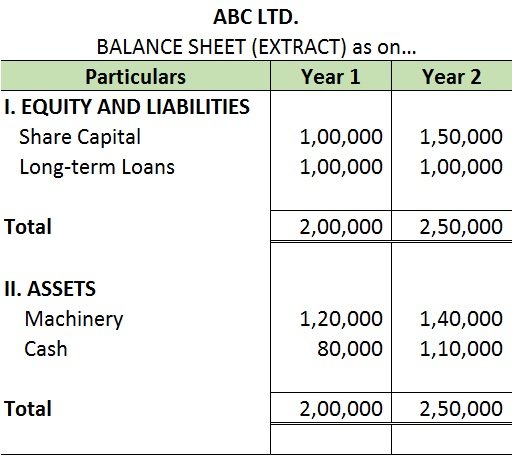Prepaid expense means a service to be rendered in the future period for which the business has already paid the remuneration. Prepaid expenses are classified as assets. The benefits of this payment will accrue to the business at a later period. For example, insurance is often paid for annually on tRead more
Prepaid expense means a service to be rendered in the future period for which the business has already paid the remuneration. Prepaid expenses are classified as assets. The benefits of this payment will accrue to the business at a later period.
For example, insurance is often paid for annually on the basis of the calendar year. A business may pay insurance every year on 1st January for that entire year. While preparing the financial statements on 31st March, it will recognize the insurance premium for the period 1st April to 31st December of the next financial year as a prepaid insurance expense.
Why are prepaid expenses classified as assets?
First of all, let us understand what an asset is. An asset is anything over which the business has ownership rights and which it can sell for money. The benefits of this asset should accrue to the business.
In light of this definition, let us analyze prepaid expenses as an asset. As the business has already paid for these goods or services, it becomes a legal right of the business to receive the relevant goods or services at a later date. As the benefit of this expense would accrue to the business only at a later date, the prepaid expenses are classified as an asset.
Some examples of prepaid expenses are prepaid insurance, prepaid rent etc
Treatment of Prepaid Expenses
Prepaid expenses are recorded in the balance sheet under the heading “Current Assets” and sub-heading “Other Current Assets”
As per the Generally Accepted Accounting Principles or GAAP, expenses must be recognized in the accounting period to which they relate or in which the benefit due to them is likely to arise. Thus, we cannot recognize the prepaid expenses in the accounting period in which they are incurred.
Prepaid assets are classified as assets and carried forward in the balance sheet to be debited in the income statement of the accounting period to which they relate.

Adjusting Entries
Adjusting entries are those entries that are used to recognize prepaid expenses in the income statement of the period to which they relate. These entries are not used to record new transactions. They ensure compliance with GAAP by recognizing the expenses in the period to which they relate.
Conclusion
The GAAP and basic definition of an asset govern the treatment of prepaid expenses as an asset. The business incurs them in an accounting period different from the accounting period in which their benefit would accrue to the business. The business has a legal right to receive those goods or services.
The business carries them as a current asset on the balance sheet. In the relevant accounting period, they are recognized in the income statement.
See less



Introduction In Tally, journal entries are made in the vouchers. For each type of journal entry, there is a specific voucher. It is the vouchers where the transactions are recorded along with all the relevant details. Hence, when we speak of journal entries in tally, it is the vouchers which we haveRead more
Introduction
In Tally, journal entries are made in the vouchers. For each type of journal entry, there is a specific voucher. It is the vouchers where the transactions are recorded along with all the relevant details. Hence, when we speak of journal entries in tally, it is the vouchers which we have to master.
In Tally, vouchers are of four types:
The vouchers under the above voucher types are as shown below:
To open the voucher creation menu follow these steps:
In Tally ERP 9: Gateway of Tally→ Accounting Vouchers→ Voucher creation menu will open
In Tally Prime: Gateway of Tally→ Vouchers→ Voucher creation menu will open
Out of the above vouchers, the vouchers which I would suggest you practice are as follows (along with their short-cut keys):
All of the above are accounting vouchers. You can simply press the short-cut keys to open the respective voucher while in the voucher creation menu
If you are new to tally, I would suggest you practice only the accounting vouchers.
Here, I have discussed only the accounting vouchers:
Payment Voucher – F5
A payment voucher is used to record payments of cash or by the bank. Payment can be to creditors or for expenses.
There are two modes to this voucher which you can change by clicking the ‘Change Mode’ option on the right-hand side menu or simply pressing Ctrl + H. This menu will open.
Select the ‘Double Entry’ mode for sake of simplicity. In this mode, the entry will be just like the conventional journal entry as in the double entry system of accounting.
You have to just select the account you want debit which can be an expense, creditor etc. and you can credit only the cash or bank accounts as it is a payment voucher. Below there is a narration field which you can fill too. After entering all the necessary details you have to accept the voucher.
Here, is a filled payment voucher in which I have recorded an expense payment entry.
The journal entries which you can practice on payment vouchers are as follows:
Receipt Voucher – F6
A receipt voucher is used for the recorded receipt of cash in the business. Just like a payment voucher, I recommend you to use it in Double Entry mode. In Tally prime, it looks this:
The receipt voucher given above is already filled. I have passed a ‘collection from the debtor’ entry here.
The journal entries you can practice in the receipt voucher are as follows:
Purchase Voucher – F7
A purchase voucher is a voucher for exclusively recording purchase of goods entries. Purchase whether cash or credit should be recorded in the purchase voucher only as it allows recording of additional details related to purchase as well as tracking with purchase order and receipt note.
The purchase voucher looks like this:
Here, the purchase voucher is opened in ‘Item invoice’ mode. Item invoice is easier to understand hence I advise you to this mode to use the purchase voucher. You can change the mode by pressing Ctrl + H.
If you wish to record transactions like journal entries then you can choose the ‘As Voucher’ mode.
The details which you have to fill in are as follows:
Below is a complete purchase voucher where a credit sale transaction is passed:
Sales Voucher – F8
A sales voucher is a voucher for exclusively recording sales of goods entries. Sales, whether cash or credit, should be recorded in the sales voucher only as it allows recording of additional details related to sales as well as tracking with Sales orders and Delivery notes.
Here also, I recommend you to use the sales voucher in Invoice mode
Filling up of details in sales voucher is same as in purchase voucher. The difference here is that in the ‘Accounting details’ section you have selected a sales account to be credited.
Here is a completed sales voucher where I have recorded a credit sale transaction:
Contra Voucher – F4
A Contra voucher is used to record contra transactions. Contra transactions are those transactions which take place between:
The journal entries which can be practised on contra voucher are as follows:
Given below is a completed Contra voucher in which ‘cash deposited into bank’ transaction is recorded:
Journal Voucher – F7
There are many transactions which cannot be passed in any of the vouchers discussed above. The examples of such transactions or journal entries are as follows:
It is an important voucher in Tally as many crucial entries are recorded in it.
The journal voucher looks like this:
It looks like a journal book and it does not have any different mode like voucher discussed above:
The journal entries to practice on journal vouchers are many. You can refer to the examples of transactions I have mentioned above.
Debit Note Voucher – Alt + F5
A debit note voucher is to record purchase return transactions in Tally. Hence, the only transaction you can record here is of purchase return. The debit note voucher looks like this:
Credit Note Voucher– Alt + F5
In credit note vouchers, the sale return transactions are recorded. The credit note voucher looks like this:
That’s all. These are vouchers I would recommend one to practice on Tally.
See less